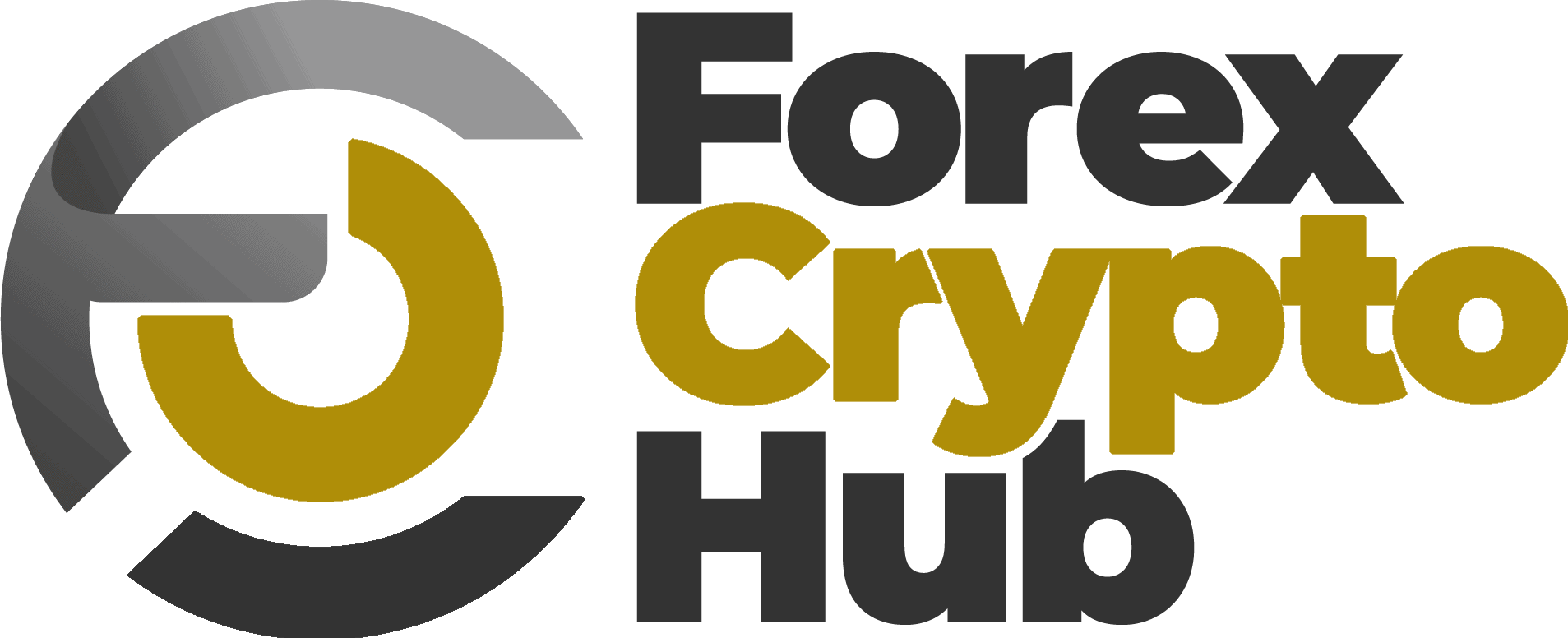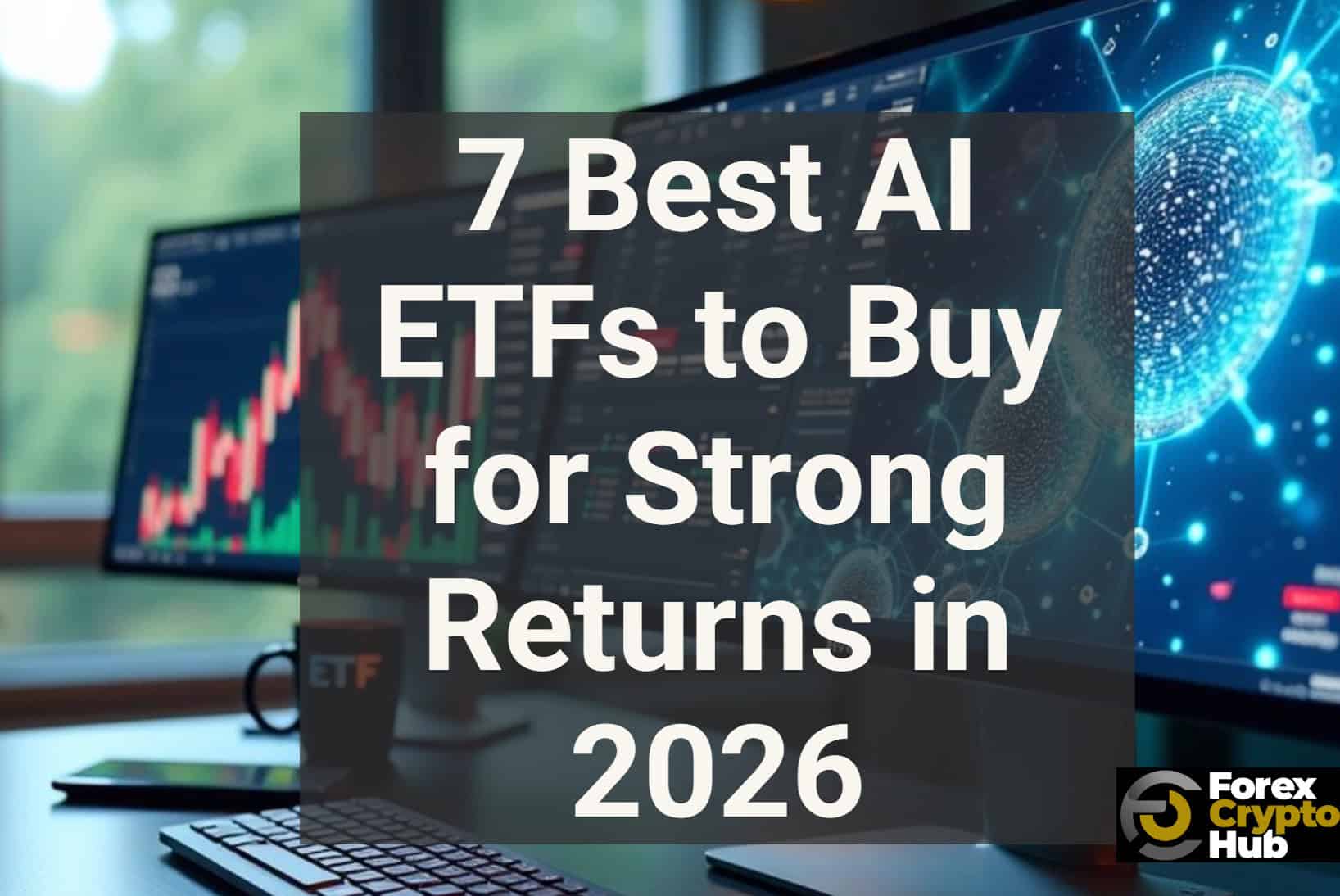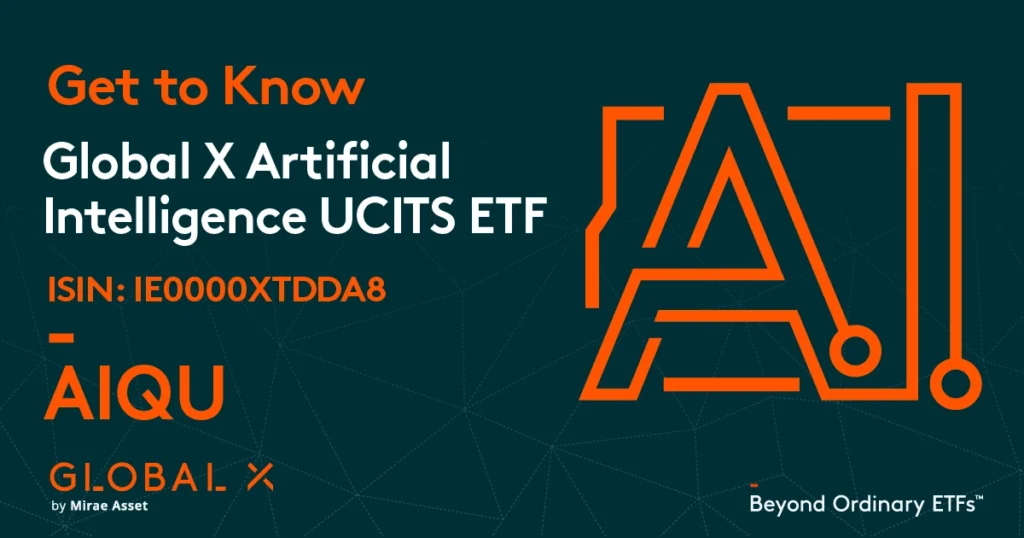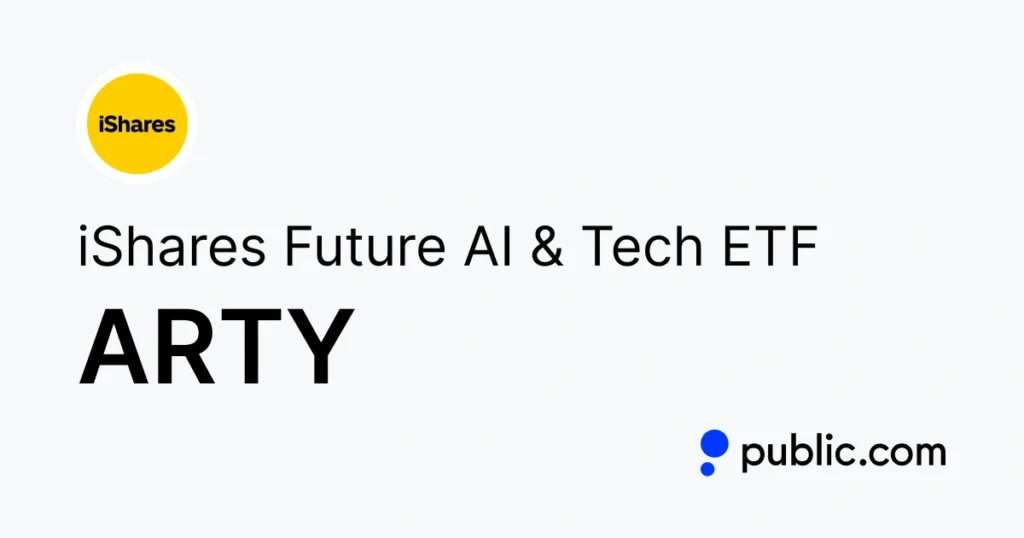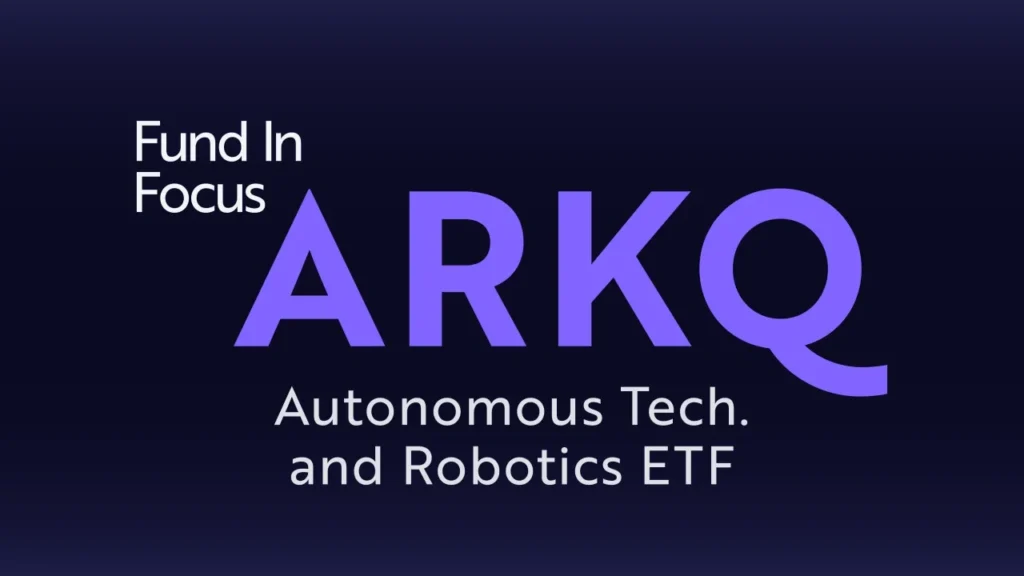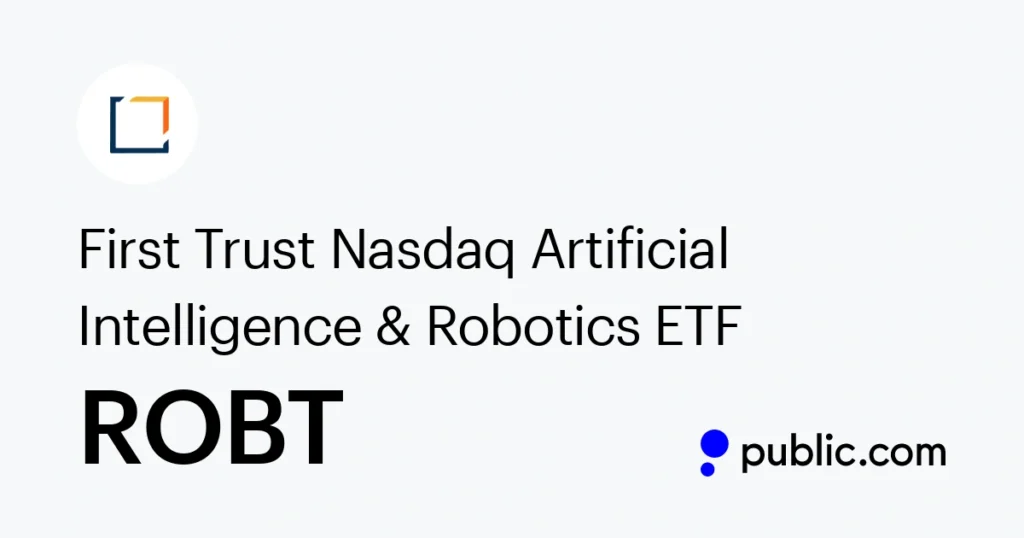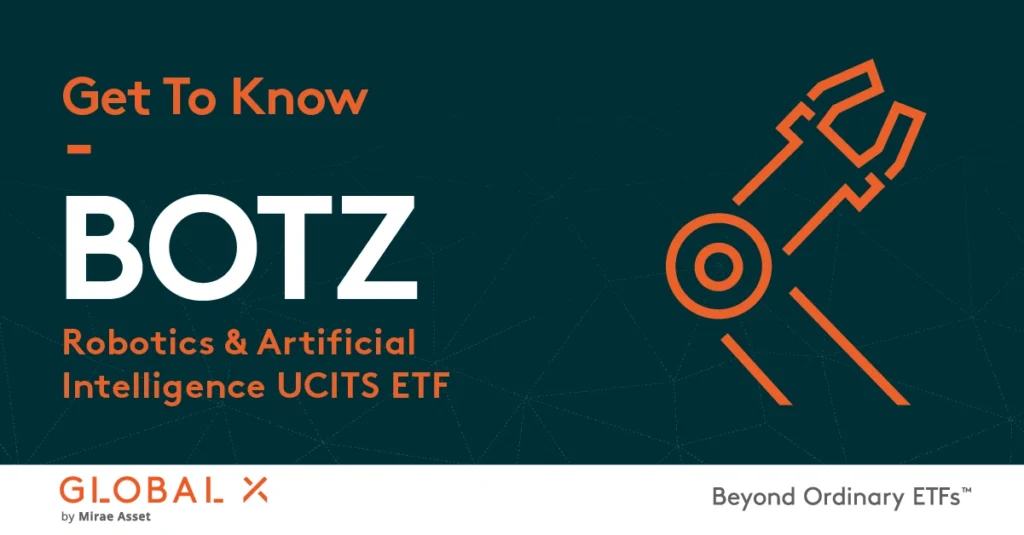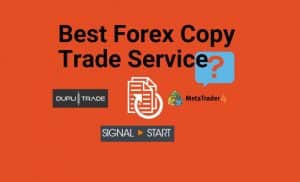Want to find the best AI ETF to join the artificial intelligence revolution? You’re not alone. The global AI market will grow from $184 billion in 2024 to $826.7 billion by 2030 . Investors can now choose from nearly 60 AI ETFs .
The sector shows remarkable growth. The Dan Ives Wedbush AI Revolution ETF (IVES) gathered $836 million in assets just four months after its June launch . The Global X Artificial Intelligence & Technology ETF has shown strong results with a 17.9% average annual return since it started .
Table of Contents
The rush to invest in artificial intelligence ETFs makes sense. About 87% of global organizations believe AI technology will help them compete better . The AI cycle is still in its early phases, so spreading investments across companies and regions is vital .
Our analysis covers top AI ETFs that give you access to semiconductors, machine learning, robotics, and quantum computing. This piece helps you make smart investment choices for potential returns in 2026. You’ll find both proven performers and new options like the iShares A.I. Innovation and Tech Active ETF .
Global X Artificial Intelligence & Technology ETF (AIQ)
Image Source: Global X ETFs Europe
The Global X Artificial Intelligence & Technology ETF reigns as the market’s largest AI ETF. This fund serves as the life-blood option for investors who want exposure to this faster-growing sector. Since its launch on May 11, 2018, the fund has become a powerhouse in the AI investment landscape [1].
AIQ Key Features
AIQ employs a uniquely broad approach to artificial intelligence investing. The fund targets companies that develop AI technologies and those that employ these breakthroughs in their operations. By tracking the Indxx Artificial Intelligence & Big Data Index, it focuses on companies that benefit from AI advancement and provide hardware to aid AI analysis of big data [1].
The fund invests “without regard for sector or geography” because the AI market “spans multiple segments” and has both mature companies and newcomers [2]. This strategy creates a diversified portfolio in industries of all sizes and regions, though technology remains its primary focus.
The fund’s 92 individual stocks provide extensive diversification within the AI theme [3]. While technology leads the way, AIQ spreads investments across consumer discretionary, automotive, transportation, commercial services, financial services, and healthcare sectors [2].
AIQ Top Holdings
The portfolio’s top holdings blend tech giants with specialized AI pioneers:
Advanced Micro Devices (AMD): 3.94%
Samsung Electronics: 3.81%
Alibaba Group Holding: 3.59%
Alphabet: 3.52%
Oracle Corporation: 3.45%
Tesla: 3.43%
Taiwan Semiconductor Manufacturing: 3.32%
Broadcom: 3.31%
Apple: 3.08%
Palantir Technologies: 3.06% [3]
These top 10 holdings make up about 34.5% of the fund’s total assets [3]. This balance ensures no single company overshadows the portfolio while keeping focused exposure to key AI players.
AIQ Expense Ratio
A total expense ratio of 0.68% [1] applies to the fund. This rate runs slightly above the 0.56% median for actively managed ETFs [2]. The fee structure makes sense given the specialized focus and active management needed for the dynamic AI sector.
AIQ Performance
AIQ’s returns have soared 225% since its 2018 launch. The fund beat both the S&P 500’s 144% gain and the Nasdaq’s 205% gain during this time [2].
Recent performance metrics show strong momentum:
1-year return: 32.89%
3-year annualized return: 37.41%
5-year annualized return: 16.40%
Since inception annualized return: 17.91% [1]
These numbers place AIQ among the best-performing thematic ETFs in recent years, proving its investment approach right in the artificial intelligence space.
AIQ Best For
This ETF suits investors who want broad exposure to the AI revolution without putting all their eggs in one basket. The fund works best for:
Growth-oriented investors with a medium to long-term horizon
People who want balanced exposure to both AI developers and adopters
Investors looking for international diversification within the AI theme
Portfolios that need technology sector exposure with a specific AI focus
The fund’s reasonable valuation metrics make it attractive to value-conscious investors. It trades at 25.5 times trailing earnings, compared to S&P 500 and Nasdaq’s P/E ratios of 30.8 and 32.9 respectively [2].
AIQ Risk Factors
Strong performance aside, investors should think over these risk factors:
Technology sector concentration (70.6% of holdings) makes it vulnerable to tech downturns [2]
Higher expense ratio than broad market ETFs affects long-term returns
U.S. market concentration (69.1% of stocks) limits geographical spread [2]
High-risk and expensive securities might not deliver positive returns over time [4]
AI’s competitive landscape changes could bring volatility
Government oversight frameworks worldwide pose regulatory risks
The fund’s assets under management hit $6.55 billion by October 2025 [1]. This size provides enough liquidity for most investors but suggests its popularity might lead to crowded positions in underlying holdings.
iShares Future AI & Tech ETF (ARTY)
Image Source: Public Investing
BlackRock’s iShares Future AI & Tech ETF (ARTY) takes a targeted approach to artificial intelligence investing. The ETF tracks the Morningstar Global Artificial Intelligence Select Index. Since its launch on June 26, 2018, ARTY gives investors direct exposure to companies throughout the AI value chain [5].
ARTY Key Features
The ETF targets four core AI technology areas: generative AI, AI data and infrastructure, AI software, and AI services [5]. This complete strategy lets investors access the full range of artificial intelligence opportunities through a single investment vehicle.
ARTY holds a focused portfolio of 48 global companies from both developed and emerging markets [6][7]. This selective strategy means each holding significantly shapes fund performance. Many broader tech ETFs tend to water down their AI exposure.
ARTY stands out with its clear methodology. The index rules spell out exactly why companies join or leave the portfolio. This gives investors a reliable way to predict future holdings [7].
ARTY Top Holdings
ARTY’s top holdings blend semiconductor, infrastructure, and software companies as of October 2025:
Advanced Micro Devices (AMD): 6.19% [5]
Vertiv Holdings (VRT): 5.74% [5]
Super Micro Computer (SMCI): 5.24% [5]
NVIDIA Corporation (NVDA): 4.38% [5]
Arista Networks (ANET): 4.11% [5]
Broadcom Inc (AVGO): 4.07% [5]
Advantest Corp: 3.68% [5]
Marvell Technology (MRVL): 3.54% [5]
Constellation Energy (CEG): 3.44% [5]
Palantir Technologies (PLTR): 3.03% [5]
These top ten holdings make up about 43.8% of the ETF’s assets, showing a moderately concentrated strategy [8].
ARTY Expense Ratio
The ETF charges an expense ratio of 0.47% [7][8]. This puts it among the least expensive options in its category [8]. While not the cheapest AI ETF out there, its competitive fees help protect long-term returns – crucial for a specialized fund like this.
The fund’s 30-day median bid-ask spread sits at 0.07% [7]. This shows good liquidity and low extra trading costs when buying or selling positions.
ARTY Performance
The ETF has shown strong results recently, though returns vary based on market conditions:
Period | Return |
YTD (as of Oct 2025) | 30.00% [8] |
1-Year | 35.57% [8] |
3-Year (annualized) | 27.38% [8] |
5-Year (annualized) | 8.07% [5] |
Since Inception | 10.33% [5] |
ARTY’s 2025 performance stands out. The fund beat its technology category average of 22.76% YTD [8]. After a big drop during the 2022 tech crash, it bounced back strongly [6].
ARTY Best For
ARTY works best for:
Investors who want focused exposure to AI innovators instead of broad tech investments
Portfolios that need specific tech exposure alongside other sector investments
People who prefer clear, rules-based index methods over active management
Investors looking to tap into long-term AI growth with moderate concentration
The ETF works well either as a replacement for broad tech exposure or alongside existing tech holdings [5].
ARTY Risk Factors
Investors should think about several risks:
The ETF has heavy tech sector concentration, with most holdings coming from this one sector. The fund depends on AI technology adoption, which relies on large data sets that can sometimes be inaccurate [5].
Companies in the portfolio face tough competition and quick product obsolescence – common challenges in the ever-changing tech world [5]. The fund’s beta of 1.40 [5] shows higher swings than the broader market.
Government oversight remains a concern as regulators worldwide look at AI development. This could limit growth through data collection restrictions and compliance costs [5].
ROBO Global Robotics and Automation Index ETF (ROBO)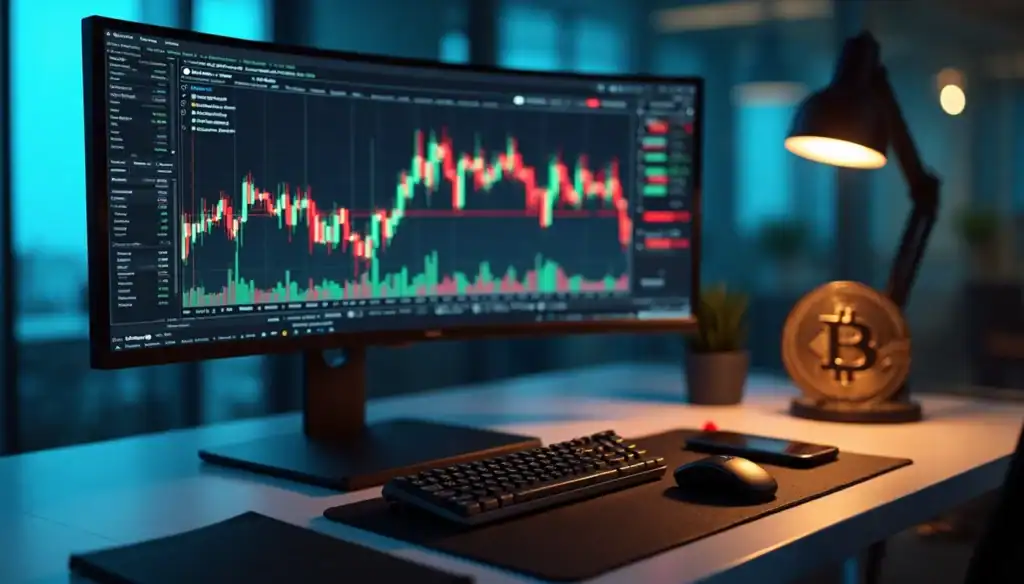
Image Source: ROBO Global
ROBO Global Robotics and Automation Index ETF (ROBO) stands as one of the pioneers in AI-focused investing. Since its launch in October 2013, it ranks among the oldest AI ETFs investors can access today [9].
ROBO Key Features
The fund follows the ROBO Global Robotics and Automation TR Index. Its primary focus lies on companies that lead state-of-the-art developments in robotics, automation, and artificial intelligence [10]. The fund sticks to a strict investment approach by putting at least 80% of its assets in securities that match the index [1].
ROBO sets itself apart from regular tech ETFs through its unique tiered weighting strategy and laser focus on the robotics ecosystem [4]. The ETF currently owns 77 stocks across various market sizes. This gives investors exposure to both 10-year-old companies and new game-changers in the field [11].
ROBO stands out by offering worldwide reach through investments across North America, Asia, and Europe. This approach recognizes that robotics innovation reaches far beyond U.S. shores [12].
ROBO Top Holdings
Recent filings show these core companies in the ETF’s portfolio:
Symbotic Inc. (SYM): 2.12%
YASKAWA Electric Corporation: 1.99%
Harmonic Drive Systems Inc.: 1.87%
Fanuc Corporation: 1.81%
Teradyne, Inc. (TER): 1.77%
Hon Hai Precision Industry Co., Ltd.: 1.69%
Airtac International Group: 1.65%
Rockwell Automation, Inc. (ROK): 1.65%
Jenoptik AG: 1.58%
Celtic Investment Inc.: 1.57% [4]
Each holding stays under 2.5% of the ETF’s value. The top five holdings make up about 10% of the fund’s total assets [11].
ROBO Expense Ratio
ROBO’s expense ratio sits at 0.95% [1], higher than most ETFs in the market. A $1,000 investment costs $9.50 yearly in fees [12].
These higher fees reflect the fund’s specialized nature and the extensive research needed to find genuine robotics innovators in this faster-moving sector.
ROBO Performance
The fund shows varied results when compared to broad market indices:
Time Period | ROBO Return | S&P 500 Benchmark |
YTD (2025) | 18.95% | 13.30% |
1-Year | 19.13% | 13.63% |
3-Year* | 16.66% | 21.45% |
5-Year* | 5.85% | 13.85% |
10-Year* | 11.37% | 12.62% |
Since Inception | 8.81% | – |
Recent data shows the ETF beating the S&P 500 in 2025 with over 20% gains [9]. However, it lags behind benchmark performance over extended periods.
ROBO Best For
ROBO works best for:
Investors who want direct exposure to robotics and automation rather than broad AI applications
People with long-term investment plans who can handle higher volatility
Portfolios seeking to vary their tech holdings beyond common AI companies
Investors who see robotics adoption growing across industries
The fund’s beta of 1.4 shows 40% more volatility than the overall market. This makes it more suitable for investors comfortable with risk [12].
ROBO Risk Factors
Several key risks need careful consideration:
The fund faces tech obsolescence risks as newer innovations can quickly replace current robotics solutions [3]. Smaller robotics startups in the portfolio often show more price swings than established companies [3].
The ETF’s largest drop hit 43.65% in October 2022, showing major downside risk during market stress [10]. Government oversight of AI applications might also create new challenges [3].
Strong competition in robotics could squeeze profit margins for portfolio companies [3].
The fund manages $1.20 billion in assets [1]. This size offers enough liquidity for most investors while keeping its targeted approach to the robotics revolution.
ARK Autonomous Technology & Robotics ETF (ARKQ)
Image Source: ARK Funds
Investment expert Cathie Wood manages the ARK Autonomous Technology & Robotics ETF (ARKQ), which gives investors a unique active approach to tap into automation, robotics and state-of-the-art AI opportunities. ARKQ launched in September 2014 and stands out with its focused, high-conviction investment strategy [2].
ARKQ Key Features
ARKQ invests at least 80% of its assets in companies that will benefit from autonomous technology and robotics breakthroughs [2]. The fund focuses on companies developing products in several state-of-the-art areas:
Autonomous mobility
Neural networks
Advanced battery technologies
3D printing
Reusable rockets
Next-generation cloud computing
Adaptive robotics [2]
The fund’s investment philosophy revolves around finding “disruptive innovation” opportunities. It targets domestic and foreign equity securities without market cap restrictions [2]. This flexibility lets the fund adjust its holdings as the autonomous technology world changes.
ARKQ Top Holdings
The ETF maintains a focused portfolio of innovative companies as of October 2025:
Company | Weight (%) |
Tesla Inc. | 11.52% |
Kratos Defense & Security | 8.90% |
Teradyne Inc. | 7.55% |
Rocket Lab | 5.97% |
Palantir Technologies | 5.82% |
AeroVironment Inc. | 5.58% |
Archer Aviation Inc. | 5.43% |
Advanced Micro Devices | 4.74% |
Trimble Inc. | 3.01% |
Deere & Co. | 2.64% |
These top 10 holdings make up about 61.1% of the portfolio [13], showing a highly focused investment approach compared to other AI ETFs.
ARKQ Expense Ratio
The ETF’s total expense ratio is 0.75% [2], placing it in the middle quintile among similar funds [13]. A $10,000 investment would cost $75 yearly in management fees. These fees reflect the active management style and specialized research needed to spot disruptive innovators.
ARKQ Performance
The fund has shown impressive returns, beating many passive alternatives:
1-Year return: 82.91%
3-Year annualized: 35.29%
5-Year annualized: 14.62%
10-Year annualized: 21.24%
Since inception (2014): 17.65% [2]
ARKQ has gained 44.33% year-to-date through September 2025 [2]. The fund’s beta of 1.57 [14] shows it’s much more volatile than the broader market.
ARKQ Best For
ARKQ works best for:
Growth-focused investors who can handle higher volatility
People wanting exposure to defense and aerospace AI applications
Investors who trust Cathie Wood’s ability to spot disruptive innovators
Portfolios seeking focused exposure to autonomous technology beyond common AI applications
ARKQ stands out from other AI ETFs because of its strong defense sector presence, with Kratos Defense and AeroVironment as major holdings [15].
ARKQ Risk Factors
The fund’s focused approach brings significant equity market risk. ARKQ saw a big drop of 46.70% in 2022 [2].
The high concentration and industrial sector focus create specific challenges. Companies might face issues from government regulation changes, environmental damages, and product liability claims [2].
The fund’s global reach adds foreign securities risk [2], while its 1.57 beta means it’s 57% more volatile than the broader market [14]. Tesla’s large position (11.52%) creates specific risks tied to one company’s performance [16].
Roundhill Generative AI & Technology ETF (CHAT)
Image Source: Roundhill Investments
The Roundhill Generative AI & Technology ETF (CHAT) launched in May 2023. It’s the world’s first ETF that focuses on generative AI and gives investors direct exposure to this faster evolving technology [17].
CHAT Key Features
This actively managed ETF lets managers adapt immediately to the ever-changing AI world [18]. The fund uses its own method to review companies that could benefit from generative AI growth. It uses transcript and sector scores to check how relevant they are [18].
CHAT puts at least 80% of its assets in equity securities of AI companies. It focuses on state-of-the-art generative AI technologies [8]. This targeted strategy creates a focused portfolio with 25-50 securities [18].
The ETF can invest globally, including emerging markets. This gives complete exposure to the worldwide generative AI ecosystem [8].
CHAT Top Holdings
CHAT’s portfolio has these leading AI pioneers as of October 2025:
Company | Ticker | Weight |
NVIDIA Corporation | NVDA | 7.93% |
Alphabet Inc. | GOOGL | 5.80% |
Oracle Corporation | ORCL | 4.31% |
Microsoft Corporation | MSFT | 3.84% |
Meta Platforms Inc. | META | 3.80% |
The top ten holdings make up about 42.43% of total assets [8]. This shows a moderately focused approach. The fund has high exposure to technology (71.37%) and communication services (22.29%) sectors [8].
CHAT Expense Ratio
The fund’s expense ratio is 0.75% [19], which is higher than passive index funds. A $10,000 investment costs $75 in annual fees [18]. These higher costs come from active management and specialized research needed to find generative AI opportunities.
CHAT Performance
The ETF has shown remarkable returns since it started:
YTD (as of October 2025): 55.71% [8]
1-Year (as of September 2025): 64.35% [17]
Since inception (May 2023): 45.36% annualized [17]
CHAT has returned 141% since launch, beating the S&P 500’s 56% during the same time [19]. This expresses the fund’s success in capturing growth in the generative AI space.
CHAT Best For
CHAT works best for:
Investors who want focused exposure to generative AI state-of-the-art
Portfolios looking to add to broader technology holdings
People who value active management in faster changing sectors
Growth-oriented investors who are comfortable with technology sector focus
The ETF serves well as part of a diversified portfolio rather than a standalone investment [19].
CHAT Risk Factors
Here are key risks to think over before investing:
CHAT has high technology sector concentration risk, with over 70% in technology stocks [8]. The fund is non-diversified under the Investment Company Act of 1940. This means it can put more money into securities from a single issuer [18].
Many portfolio companies have limited product lines and financial resources. They face tough competition and quick product obsolescence [18]. The fund’s short track record as an actively managed ETF makes it harder for investors to review its performance [19].
The fund also faces risks from foreign securities since it invests globally, which can bring more volatility [18].
First Trust Nasdaq AI and Robotics ETF (ROBT)
Image Source: Public Investing
The First Trust Nasdaq AI and Robotics ETF (ROBT) uses a unique three-tier system to classify companies as AI “engagers,” “enablers,” and “enhancers.” This classification helps build a balanced portfolio across the AI ecosystem.
ROBT Key Features
ROBT follows the Nasdaq CTA Artificial Intelligence & Robotics Index. Companies must meet specific AI criteria set by the Consumer Technology Association [20]. The fund places its holdings into three categories: engagers (companies that design AI products), enablers (firms that develop building block components), and enhancers (businesses that provide value-added services) [20]. The weight distribution stands at 60% for engagers, 25% for enablers, and 15% for enhancers [20]. At least 90% of the fund’s assets go into stocks and depositary receipts that make up the index [21].
ROBT Top Holdings
The fund’s top holdings as of October 2025 include:
Company | Ticker | Weight |
PROS Holdings | PRO | 2.00% |
BigBear.ai Holdings | BBAI | 1.98% |
SoundHound AI | SOUN | 1.98% |
AeroVironment | AVAV | 1.96% |
Symbotic Inc. | SYM | 1.95% |
With 113 holdings [22], the fund spreads risk effectively so no single company has too much influence on the portfolio.
ROBT Expense Ratio
The fund charges an expense ratio of 0.65% [20], making it one of the cheaper options among similar funds [23]. A $10,000 investment would cost $65 yearly.
ROBT Performance
Here’s how the fund has performed:
The fund lags behind its technology category peers, who averaged 22.76% YTD [5].
ROBT Best For
Risk-averse investors who want AI exposure without high volatility will find this ETF appealing [25]. The fund’s broad diversification, with just 19% in its top 10 holdings [23], makes it suitable for conservative investors who want to protect their capital. Investors can gain exposure to both emerging AI companies and established players in various sectors.
ROBT Risk Factors
The fund’s beta of 1.41 [5] shows higher volatility than the broader market. Technology stocks make up 58.35% of the portfolio [21], creating significant sector concentration. Many companies in the portfolio have limited product lines and face tough competition [11]. The fund’s 113 holdings help alleviate single-company risk.
Global X Robotics & Artificial Intelligence ETF (BOTZ)
Image Source: Global X ETFs Europe
The Global X Robotics & Artificial Intelligence ETF (BOTZ) gives investors direct access to automation technologies through robotic systems, industrial automation, and autonomous vehicles. This ETF has grown into a leading specialized option in the AI investment world since its launch in September 2016.
BOTZ Key Features
BOTZ follows the Indxx Global Robotics & Artificial Intelligence Thematic Index and invests at least 80% of its assets in companies that develop robotics and AI technologies [6]. The fund holds 53 stocks [7] in developed markets and focuses on companies that implement practical AI applications rather than theoretical research. BOTZ stands apart from broader technology ETFs by offering extensive international exposure, especially to Japanese robotics innovators.
BOTZ Top Holdings
The portfolio maintains a balanced concentration with these leading positions:
NVIDIA Corporation: 10.93%
ABB Ltd: 8.96%
Fanuc Corporation: 6.84%
Keyence Corporation: 6.28%
Intuitive Surgical: 5.36% [26]
The top ten holdings make up 56.5% of the fund’s assets [26], which provides targeted exposure to major robotics companies.
BOTZ Expense Ratio
The ETF has a 0.68% expense ratio [6] with a holdings turnover rate of 10.43% [6]. The 30-day median bid-ask spread is 0.05% [27], which shows strong liquidity for daily trading.
BOTZ Performance
The fund shows solid returns:
1-Year: 10.48% (NAV)
3-Year: 25.30% (annualized)
5-Year: 5.20% (annualized)
Since inception: 10.55% [27]
BOTZ has a beta of 1.47 [28], which means it has substantially higher volatility than the broader market.
BOTZ Best For
This ETF works well for investors who want exposure to “physical AI” applications in manufacturing, healthcare, and industrial sectors [29]. Long-term growth investors [3] who can handle above-average volatility will find it suitable. The fund appeals to those who prefer lower semiconductor exposure and higher industrial robotics allocation compared to general AI ETFs.
BOTZ Risk Factors
The fund comes with a “very high” risk rating [3]. Market volatility and foreign currency changes pose significant risks. BOTZ’s status as a non-diversified fund [6] increases concentration risk. A negative alpha of -4.56 over three years [28] shows the fund underperforms relative to its risk level.
Comparison Table
Feature | AIQ | ARTY | ROBO | ARKQ | CHAT | ROBT | BOTZ |
Expense Ratio | 0.68% | 0.47% | 0.95% | 0.75% | 0.75% | 0.65% | 0.68% |
Assets Under Management | $6.55B | Not mentioned | $1.20B | Not mentioned | Not mentioned | Not mentioned | Not mentioned |
Top Holdings Concentration | 34.5% | 43.8% | ~10% | 61.1% | 42.43% | 19% | 56.5% |
Number of Holdings | 92 | 48 | 77 | Not mentioned | 25-50 | 113 | 53 |
YTD Performance (2025) | Not mentioned | 30.00% | 18.95% | 44.33% | 55.71% | 20.00% | Not mentioned |
Launch Date | May 2018 | June 2018 | Oct 2013 | Sept 2014 | May 2023 | Not mentioned | Sept 2016 |
Key Focus/Strategy | Broad AI exposure through developers and adopters | Four core AI areas: generative AI, infrastructure, software, services | Robotics and automation focus | Autonomous technology and robotics breakthroughs | Specific focus on generative AI | Three-tier system: users, enablers, improvers | Robotics and industrial automation |
Notable Risk Factor | Technology sector makes up 70.6% | Higher volatility (Beta 1.40) | 43.65% max drawdown | Tesla exposure at 11.52% | Technology makes up over 70% | Beta of 1.41 | Beta of 1.47 |
Conclusion
AI keeps changing our world. Savvy investors now have multiple ways to join this tech revolution through ETFs. Let’s take a closer look at the top seven AI ETFs and learn what they tell us about making smart investment choices.
These ETFs each take a different path to AI investing. AIQ spreads its investments across both developers and adopters. CHAT focuses purely on generative AI chances. ROBO and BOTZ put their money mainly in robotics, while ARTY covers four core AI tech areas. ARKQ stands out with Cathie Wood’s active management style and focused strategy.
The cost of these ETFs varies quite a bit. ARTY charges a reasonable 0.47%, while ROBO comes in at a premium 0.95%. But fees aren’t everything. CHAT’s impressive 55.71% YTD returns and ARKQ’s 44.33% gains show that paying for active management can pay off substantially.
Your comfort with risk should guide which AI ETF fits your portfolio. ROBT spreads the risk with 113 holdings and only puts 19% in its top ten positions. On the flip side, ARKQ takes bigger bets with 61% of assets in just ten companies – this could mean bigger wins or losses.
These funds also invest differently around the world. Most focus on US companies, but BOTZ puts a lot of money into Japanese robotics pioneers. This could help protect your investment when US markets aren’t doing well.
The most crucial choice is which part of the AI revolution matches your investment ideas. If you believe in generative AI’s future, CHAT might be your best bet. ROBO or BOTZ could work better if you see industrial automation leading the way. AIQ or ARTY might suit you better if you want exposure to the whole AI landscape.
These ETFs have done well recently. Note that tech investing comes with bigger swings. Beta measurements of 1.40 to 1.57 show these funds move 40-57% more dramatically than the market – both up and down.
Looking ahead to 2026, AI will transform more industries and create new investment chances. Instead of trying to pick winning companies, these ETFs let you ride the AI wave while experts choose which companies will benefit most.
Past performance doesn’t guarantee future success. But AI’s expected growth from $184 billion to $826.7 billion by 2030 suggests this sector might keep beating the broader markets. Starting with a small investment in one or more of these ETFs could help your portfolio benefit from what many call our generation’s biggest tech shift.
Key Takeaways
The AI ETF market offers diverse investment strategies to capitalize on the projected growth from $184 billion to $826.7 billion by 2030, with each fund targeting different aspects of the artificial intelligence revolution.
• AIQ leads with broad diversification: Global X’s AIQ offers the largest AI ETF with 92 holdings across developers and adopters, delivering 17.9% annualized returns since 2018 inception.
• CHAT dominates generative AI focus: Roundhill’s CHAT provides the world’s first generative AI-specific ETF, achieving impressive 55.71% YTD returns in 2025 through concentrated exposure.
• Expense ratios vary significantly: Costs range from ARTY’s competitive 0.47% to ROBO’s premium 0.95%, with performance often justifying higher fees for specialized strategies.
• Risk tolerance determines best fit: Conservative investors should consider ROBT’s 113-holding diversification, while growth seekers might prefer ARKQ’s concentrated 61% top-ten allocation.
• Geographic and sector focus matters: BOTZ offers Japanese robotics exposure while most funds concentrate on US tech giants, creating different risk-return profiles for portfolio diversification.
These ETFs typically exhibit 40-57% higher volatility than broader markets, making them suitable for investors seeking growth exposure to what many consider the most transformative technology of our generation.
FAQs
Q1. Which AI ETF has shown the strongest performance recently? While performance can vary, the Roundhill Generative AI & Technology ETF (CHAT) has delivered impressive returns, gaining over 55% year-to-date in 2025. However, past performance doesn’t guarantee future results, and investors should consider multiple factors beyond short-term gains.
Q2. How do AI ETFs compare in terms of expense ratios? Expense ratios for AI ETFs can vary significantly. For example, the iShares Future AI & Tech ETF (ARTY) has a competitive 0.47% ratio, while the ROBO Global Robotics and Automation Index ETF (ROBO) charges 0.95%. Investors should weigh costs against potential returns and fund strategy.
Q3. Are AI ETFs suitable for risk-averse investors? Generally, AI ETFs exhibit higher volatility than broad market indices. For more conservative investors, the First Trust Nasdaq AI and Robotics ETF (ROBT) offers greater diversification with 113 holdings. However, all AI ETFs carry technology sector concentration risk and may not be ideal for highly risk-averse portfolios.
Q4. How do AI ETFs provide international exposure? Many AI ETFs offer global diversification. For instance, the Global X Robotics & Artificial Intelligence ETF (BOTZ) provides significant exposure to Japanese robotics companies, while others like AIQ invest across developed and emerging markets to capture worldwide AI innovation.
Q5. What are the key differences between generalist and specialized AI ETFs? Generalist AI ETFs like the Global X Artificial Intelligence & Technology ETF (AIQ) offer broad exposure across AI developers and adopters. Specialized funds like CHAT focus on specific areas such as generative AI, while others like ROBO and BOTZ emphasize robotics and automation applications. The choice depends on an investor’s specific AI investment thesis.
References
[1] – https://money.usnews.com/funds/etfs/global-small-mid-stock/robo-global-robotics-automation-etf/robo
[2] – https://www.ark-funds.com/funds/arkq
[3] – https://www.wealthfront.com/explore/38/botz
[4] – https://stockanalysis.com/etf/robo/
[5] – https://finance.yahoo.com/quote/ROBT/
[6] – https://finance.yahoo.com/quote/BOTZ/profile/
[7] – https://stockanalysis.com/etf/botz/
[8] – https://finance.yahoo.com/quote/CHAT/holdings/
[9] – https://www.nasdaq.com/articles/3-ai-etfs-buy-now-coming-tech-revolution
[10] – https://portfolioslab.com/symbol/ROBO
[11] – https://www.fool.com/investing/stock-market/market-sectors/information-technology/ai-stocks/ai-etfs/
[12] – https://www.fool.com/investing/how-to-invest/etfs/how-to-invest-in-robo-etf/
[13] – https://www.morningstar.com/etfs/bats/arkq/quote
[14] – https://finance.yahoo.com/quote/ARKQ/risk/
[15] – https://investorplace.com/2024/07/the-3-best-etfs-to-buy-now-for-ai-and-robotics-exposure/
[16] – https://etfdb.com/etf/ARKQ/
[17] – https://www.roundhillinvestments.com/etf/chat/
[18] – https://www.roundhillinvestments.com/assets/pdfs/chat_prospectus.pdf
[19] – https://www.fool.com/investing/2025/10/15/1-no-brainer-ai-etf-to-buy-with-65-ahead-of-2026/
[20] – https://www.nasdaq.com/articles/robt-irbo-or-chat-which-ai-etf-best-according-analysts
[21] – https://finance.yahoo.com/quote/ROBT/holdings/
[22] – https://www.ftportfolios.com/Retail/Etf/EtfHoldings.aspx?Ticker=ROBT
[23] – https://www.morningstar.com/etfs/xnas/robt/quote
[24] – https://www.ftportfolios.com/retail/etf/etfsummary.aspx?Ticker=ROBT
[25] – https://www.buysidedigest.com/elevator/robt-the-risk-light-option-of-ai-funds/
[26] – https://www.morningstar.com/etfs/xnas/botz/quote
[27] – https://www.globalxetfs.com/funds/botz/
[28] – https://finance.yahoo.com/quote/BOTZ/risk/
[29] – https://www.kiplinger.com/investing/etfs/601112/top-artificial-intelligence-ai-etfs
